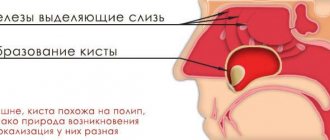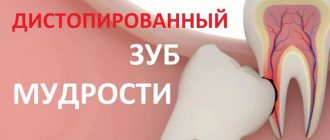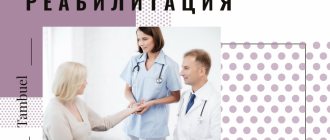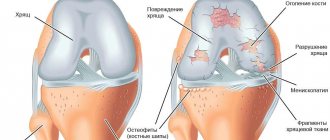What causes noise, humming and whistling in the ears, what to do with them if they poison your life, and in general - is it dangerous? How to determine the cause and is it possible to get rid of unpleasant hearing sensations forever?
I don't want to hear it!
We have already written about tinnitus - noise, hum and/or whistling in the ears, as a sensation of unknown etiology, without an external sound source (see the articles “...Do you hear it too?” and “I hear a ringing, but I don’t know where it is” ). In short: perhaps each of us has encountered such phenomena at least once in our lives. For most people, the ringing goes away quickly, leaving no unpleasant consequences or memories. But sometimes an annoying symptom occurs so often and lasts so long that it forces you to see a doctor. And it is right! To begin with, you can make an appointment with a local therapist, an ENT specialist, or better yet, directly with an audiologist at a specialized medical center.
Detailed examinations (including MRI, CT, ECG, blood tests, etc.) will help identify the true cause. It is not always subjective, that is, true tinnitus. There is a high probability of detecting very real diseases.
Vascular problems
Most often they arise due to compression in the cervical spine - let’s say “thank you” to the lack of mobility, long hours of working at the computer, relaxing with a smartphone in hand. But there may be other reasons: cerebrovascular accidents, rapid pulse, high or low blood pressure. And this, in turn, is also a symptom. It’s just that there are no big deviations from the standard 120/80 and 110/70.
Treatment then will consist of removing blocks and clamps in the neck from a neurologist, orthopedist, chiropractor, normalizing blood pressure, etc.
By the way, one of the signs (not mandatory, do not engage in self-diagnosis, doctors warn, just take note and pay attention to the specialist at the appointment) that noise, humming and whistling in the ears are associated with blood vessels, if they have a pulsating nature, which coincides with the heart rate abbreviations.
But there can also be very dangerous conditions! For example, tinnitus is one of the first, early signs of a stroke. If you have time to consult a doctor, the destructive effect on the body can be prevented or smoothed out.
How to remove a plug from your ear
- rinse with water. Water is drawn into a special syringe and the stream is directed into the ear canal. Water pressure flushes wax out of the ear. It does not hurt. Sometimes multiple treatments are required;
- pull out with tweezers. Only an otolaryngologist removes the plug in this way. He has special devices: tweezers or a hook. With the help of them, he carefully removes the sulfur. The method is used for damaged membrane;
- drop drops. There are drops that dissolve sulfur. They are buried in the ear and wait until the substance takes effect. This takes a few minutes. After which the person tilts his head and the sulfur along with the drops flows out. You can instill it at home or at the doctor's office. The method is suitable for small children, as it is difficult for them to sit still for a long time;
- remove with heat. A person lies with his ear on a heating pad. The water in it should not be hot. Otherwise you might get burned. The heat softens the wax and leaves the ear. If you don’t have a heating pad, you can take a plastic bottle with warm liquid;
- blow out your ear. Take a deep breath and hold the air. Pinch your nose, cover your mouth and exhale sharply. Air will enter the ear canal through the Eustachian tube and push the plug towards the exit;
- use ear candles. Pharmacies sell candles to remove wax. They contain beeswax and propolis. The procedure can be carried out at home, but very carefully. An assistant will be needed. Insert the candle into your ear and light it. While the candle burns, a vacuum is created in the ear, which will push the wax out.
Regardless of the removal method, be prepared for a side effect - temporary hearing loss. Any intervention causes swelling. Because of it, the ear canal narrows and the person hears worse.
Development of otitis media
Adults rarely turn to an ENT specialist for otitis, they prefer to warm the ear, drop drops, after reading advice from the Internet, but this may not eliminate the disease, but drive it into a chronic form, only by relieving acute attacks. Otitis is considered a childish, even infantile problem, and not many people think about it when they hear tinnitus. But as soon as old inflammations are treated (by the way, tympanometry, a fast and affordable modern diagnostic method, can help detect them), hearing perception is restored.
Terms of use
Suppositories for ear treatment can be purchased at the pharmacy in ready-made form, but the effectiveness of such drugs is largely determined by the correct use of them.
Without reading the instructions for the drug, you should not use it to treat otitis or sinusitis. The instructions for ear phytocandles describe the basic rules for using products at home:
- Before the treatment procedure, you should prepare a towel, a glass of water, ear sticks, and baby cream;
- the patient is asked to lie on his side so that the sore ear is on top, and put a protective plastic cap on his head;
- Next, you need to lightly massage the outer part of the ear using baby cream, cover your face with a cloth with a slit for the ear;
- upon completion of the preparatory manipulations, proceed to the actual treatment: set fire to the upper part of the wax product, placing the foil against the outer part of the ear canal;
- when the candle burns down to the foil, the patient will begin to feel warmth;
- at the end of burning the ear candle, remove its remains and the softened wax plug using an ear stick;
- at the end of the procedure, the patient should cover the ear with a towel for a quarter of an hour to retain the healing heat from the wax candle.
Important! Ear suppositories can only be used if the patient does not have pus coming out of their ears.
The dosage and duration of use of such drugs are also indicated in the manufacturer's instructions, but can be adjusted by the attending physician based on the clinical picture of the disease.
| Form of the disease | Dosage and duration of treatment |
| Acute | Once every 4 days for 2 weeks |
| Chronic | Once every 3-4 days for a month |
| Prevention | 2-3 times a month |
Nervous system diseases
There are a lot of them! This includes multiple sclerosis, meningitis, epilepsy, and a consequence of age-related changes (such as Parkinson's disease)... Dozens of diagnoses, many of which are very serious, but they still need to be made. Noise, humming and whistling in the ears are therefore important symptoms. If they bother you or your loved ones, and the therapist or other specialist to whom you turned for help “waves it off”, saying that it’s tinnitus, a sound for no reason... perhaps you should first look for a more meticulous doctor. There is always time to decide that the sounds come from nowhere and are harmless.
By the way, frequent stress and overwork lead to problems with the nervous system. Maybe before you get an appointment, you should try to at least get some rest? Take a time out, be quiet and in nature. If the intrusive sounds disappear at this time, you are on the right track. Stress less and rest more. You can ask your doctor to prescribe sedatives, but this is not necessary.
Evaluation of the effectiveness of drugs used to remove wax plugs
A.I. KRYUKOV
, Doctor of Medical Sciences, Professor,
A.V.
GUROV , Doctor of Medical Sciences, Professor,
E.V.
GAROV , MD,
O.A.
KISELEV ,
Moscow Scientific and Practical Center of Otorhinolaryngology named after.
L.I. Sverzhevsky; Department of Otorhinolaryngology, Faculty of Medicine, Russian National Research Medical University. N.I. Pirogova, Moscow The problem of the formation of sulfur plugs is quite relevant for medical practice all over the world and is one of the most common reasons for patients to visit an otorhinolaryngologist. According to statistics, in our country, sulfur plugs occur in 4 million people of working age, 750 thousand elderly people and 860 thousand children [1, 2, 4].
Earwax is an accumulation of earwax, sebaceous gland secretion, desquamated epidermis, consists of lipids, glycoproteins, hyaluronic acid, enzymes and immunoglobulins. As is known, sulfur secretion is produced by cerumenous (lat. cerumen) glands, located mainly in the membranous-cartilaginous part of the external auditory canal, capable of producing up to 20 mg of earwax per month. Earwax has two components. The fatty and denser adhesive part is produced by the sebaceous glands of the hair follicles, and the more liquid part is produced by the sulfur glands. The composition of earwax includes proteins, mineral salts, and free fatty acids [1, 5].
According to a study by J. Shuggo et al. (1988), earwax comes in two types: “dry” (most common among Asians and natives of America), which has a gray tint, and “wet” (inherent in Caucasian and African populations), which has a brown or dark color. The glands that produce earwax are surrounded by thin muscle fibers, which, when contracted, promote the removal of wax to the external auditory canal. Normally, the human ear is designed in such a way that during talking or chewing, i.e., during the operation of the temporomandibular joint, movements of the lower jaw and the wall of the ear canal occur, due to which sulfur masses drain outward [1, 2].
Earwax performs important physiological functions. Some of the proteins that make up the structure of earwax are immunoglobulins, which determine the protective function. Sulfur has bacteriostatic properties, providing protection to the ear canal from the development of an infectious process caused by certain coccal and rod forms of bacteria. The pH level of earwax is between 4.0 and 5.0, which counteracts the development of bacterial and fungal flora. In addition, the film formed by earwax on the walls of the ear canal prevents the long-term persistence of various microorganisms, the presence of dust particles, as well as other exogenous factors and, thus, also provides a protective function. It is known that without earwax, adequate functioning of the entire sound conduction system would be impossible. Earwax, which provides adequate moisture and elasticity to the walls of the ear canal, helps to amplify the sound wave passing through the ear canal by an average of 12 dB. However, its excess, on the contrary, leads to the formation of sulfur plugs, causing discomfort and irritation of the external auditory canal. It is important to distinguish excessive accumulation of earwax (its hypersecretion) from an insufficiently effective process of its removal [1, 3, 6].
The amount of earwax is determined mainly by genetic characteristics specific to each individual. The individual anatomical features (narrowness, tortuosity, etc.) of the ear canal of each patient also play an important role in the development of cerumen plug. In addition, there are other reasons that lead to hypersecretion of ear secretions. Thus, earwax is produced as a result of irritation of the epidermis of the ear canal by foreign objects, as well as in response to emotional stress. One of the important factors leading to hypersecretion of sulfur glands is the prolonged presence of headphones, telephone headsets, etc. in the ear canal.
The patient's age also affects the amount of wax produced in the ear canal. Thus, wax plugs occur much more often in older people, and this is the result of a combination of hypersecretion and an age-related decrease in the efficiency of the process of removing wax plugs from the ear (hypertrichosis, slow processes of wax removal due to metabolic disorders, etc.) [1, 2, 4 ].
The reasons that provoke hypersecretion of earwax include too frequent use of cotton swabs. Cotton swabs are not sterile; on their surface there are a large number of bacteria and fungi, which, when entering the external auditory canal, can cause various types of inflammatory lesions of the external auditory canal and in some cases can lead to the development of complications [1, 3]. In addition, by manipulating a cotton swab, mainly in the area of the membranous-cartilaginous part of the external auditory canal, patients move cerumen masses towards the bony part of the auditory canal, which ultimately leads to the formation of cerumen plug. Therefore, the use of ear sticks to remove wax secretions is extremely inappropriate. The same applies to children, since manipulations in the ear canal in a child can lead to damage to the delicate epidermal layer of the external auditory canal and, thus, the development of traumatic damage [2].
An important factor predisposing to the formation of wax plugs is the entry of water into the external auditory canal. Under the influence of moisture, the wax plug swells and obstruction of the ear canal develops.
In this case, hearing loss occurs when either the entire ear canal or more than 75% of its lumen is blocked. Earwax also manifests as tinnitus, the perception of one's own voice in the ear with a plug (autophony), or a feeling of ear fullness. In rare cases, a reflex cough, headache, dizziness and nausea may occur. These symptoms are observed in those people in whom the cerumen plug is located in the bone region and exerts mechanical compression on the eardrum [1, 2, 4].
All of the above necessitates the timely removal of sulfur secretions from the external auditory canal, as well as the prevention of their formation. Currently, one of the effective methods for removing wax plugs is cerumenolysis.
Cerumenolysis is based on the introduction into the lumen of the ear canal of special substances - cerumenolytics, capable of dissolving earwax. Currently, there are a sufficient number of drugs used for this purpose, differing in their chemical composition, demonstrating clinical effectiveness. Such drugs, in particular, are Anaurette, A-Cerumen, Remo-Vax.
The main active ingredient of Anaurette is phytosqualane, obtained from olive oil, which in its physical and chemical characteristics is similar to earwax. It easily penetrates the sulfur plug, gently dissolves it and removes it from the ear canal. The filler is mineral oil, provides inert rinsing, dissolution and cleansing of earwax. Peppermint oil warms the ear canal and catalyzes the physical process, causing a pleasant sensation in the patient, and provides a fresh smell of the drug. A-Cerumene is an aqueous emulsion of three surfactants (anionic, amphoteric and nonionic), which reduces surface tension. Penetrating inside the sulfur plug, the drug dissolves it without causing swelling. In this case, gradual lysis of the cerumen plug and normalization of sulfur secretion occur without the risk of vestibular and auditory disorders. Remo-Vax is a drug containing allantoin, phenylethanol, liquid lanolin, butylated hydroxytoluene - substances that penetrate into the thickness of the sulfur/sulfur plug, loosen and dissolve the sulfur/sulfur plug.
The purpose of this study, which took place in February – May 2014 on the basis of the Moscow Scientific and Practical Center of Otorhinolaryngology named after. L.I. Sverzhevsky, was a comparative assessment of the effectiveness and tolerability of the drugs Anaurette, A-Cerumen and Remo-Vax in the treatment and prevention of ear wax plugs.
Materials methods.
The study included 120 patients (63 men and 57 women) with a confirmed diagnosis of cerumen impaction aged 18–90 years (mean age 56 ± 3.1 years). All patients were randomized into 3 groups. Patients included in group I (40 people) received the drug Anaurette, patients in group II (40 people) received the drug A-Cerumen, and, finally, patients in group III (40 people) received the drug Remo-Vax.
During the study, the speed of removal of sulfur secretion according to the otoscopic picture, subjective sensations of hearing restoration, and drug tolerability were assessed.
In order to objectify the effect of freeing the external auditory canal from sulfur masses, a scale was used that reflected the severity of obstruction of the auditory canal ( Table 1
).
| Table 1. Scale for the degree of obstruction of the external auditory canal | ||
| Degree of obstruction | Description | Scale points |
| Absence | Obstruction of 0% diameter of the external auditory canal | 0 |
| Minor | Obstruction <50% diameter | 1 |
| Moderate | Obstruction >50% diameter | 2 |
| Full | Obstruction 100% diameter | 3 |
In addition, in order to simplify the description of the types of sulfur plugs, depending on the consistency, a special coding was used.
Thus, a dry, dense sulfur plug was coded with the letter A, a dry, loose plug with the letter B, and, finally, a soft, wet plug with the letter C. Results of the study
According to the otoscopic examination, the following results were obtained.
In 37 (30.8%) of the examined patients, complete obstruction of the external auditory canal was observed - 3A. Other variants of the severity of obstruction of the ear canal and the consistency of the plug were less common ( Fig. 1
).
Analyzing the dynamics of removal of sulfur secretion, it should be noted that the fastest results were achieved with the use of the drug Anaurette ( Fig. 2
).
Thus, in the group of patients receiving this drug, in 28% (11 patients) already on the second day of use it was noted
complete release of the external auditory canal from sulfur secretion. In patients receiving other drugs, a similar result was achieved only on the fourth day of therapy. By the third day of treatment, the desired effect was achieved in 40% (16 patients) receiving Anaurette; in 18% of cases (7 people) in patients taking A-Cerumen, and in 13% of cases (5 people) in patients using Remo-Vax.
Similar results were noted when studying the dynamics of subjective sensations of hearing restoration ( Fig. 3
).
In the group of patients receiving Anaurette, hearing restoration was achieved by the second day of therapy in 60% (24 patients). In patients taking A-Cerumen and Remo-Vax, a similar effect by the second day was obtained only in 7.5% (3 patients) and 5% (2 patients) of cases, respectively.
It is worth emphasizing that during the entire observation period there were no side effects that required discontinuation of the drugs. At the same time, patients receiving the drug Anaurette (especially older people) noted subjective comfortable feelings of warmth and freshness that arose after using the drug.
Conclusion
Analyzing the data obtained, it should be noted that the fastest result of freeing the ear canal from sulfur masses, as well as a subjective feeling of hearing restoration, including patients with dry dense cerumen plugs and complete obstruction of the ear canal (3A), was achieved in the group of patients taking the drug Anaurette .
Thus, Anaurette is the most effective means of combating sulfur plugs, superior to analogues, and can be recommended for widespread use in clinical practice for the purpose of cerumenolysis. Literature
1. Palchun V.T., Kryukov A.I. Otorhinolaryngology: A Guide for Doctors, M.: Medicine, 2001, 616. 2. Slavsky A.N., Pshonkina D.M. Cerumenolysis: a new solution to an old problem. Russian Medical Journal, 2013, 33: 1686-1689. 3. Gurov A.V., Guseva A.L. Microbiological features of chronic suppurative otitis media and their impact on the course of the disease. Bulletin of Otorhinolaryngology, 2007, 2: 7-10. 4. Wetmore R. Desease of external ear. Pediatric Otolaryngology. NY: Thieme, 2000: 253–254. 5. Okuda I, Bingham B, Stoney P. The organic composition of earwax. J. Otolaryngol., 2003: 212-215. 6. Lum CL, Jacenti S., Prepagaren N. Antibacterial and antifungal properties of human cerumen. J. Laryngol Otol., 2008, 11: 1-4.
Source:
Medical Council, No. 15, 2014
Incorrect fitting of hearing aids
As a rule, in this case, a person is bothered not so much by noise or hum, but by whistling in the ears. Fortunately, the problem can be solved with proper configuration. And in the Signia line, for example, there are hearing aids with a tinnitus masking function.
Did you know that if a hearing-impaired person has been bothered by extraneous and causeless sounds for a long time, then often it is after setting up the devices that the unpleasant sensations either soften or go away completely. Isn't that right for you? Tell your audiologist about this.
Medicinal properties
Some specialists in the field of otolaryngology are categorically against this type of product. Despite this factor, candles are popular with many consumers. Let's consider what properties the medicinal suppository has:
- The ears, throat and nose are interconnected. Even a child knows about this. For this reason, ear candles can act and fight not only diseases and pathologies of the ears. For example, suppositories are prescribed to remove copious amounts of mucus in the sinuses, which is especially important for sinusitis;
- Due to the abundant accumulation of wax in the ears, discomfort occurs. This includes significant hearing loss and extraneous sounds in the ear. A candle can cope with this problem by dissolving the sulfur plug and completely removing it;
- If the patient has inflammation of the trigeminal nerve, suppositories will also help get rid of unpleasant symptoms. As you know, this pathology is characterized by pain that radiates to the head. When the ear is warmed up with a candle, the pain subsides and helps reduce the inflammatory process;
- Some active ingredients, such as medicinal herbs, can eliminate pathogenic microflora and disrupt the activity of harmful bacteria. Suppositories based on oils, herbs or propolis can destroy pathogenic microflora, thereby accelerating the healing process;
- Suppositories are also effective for otitis media. They have a warming effect and prevent the inflammatory process. If you use the suppository in time, you can completely avoid the development of ear inflammation.
Benign or malignant tumors
They can be localized in the ear canal, different parts of the inner ear, affect the brain... They are detected on CT and MRI. Correcting the problem may require surgical removal and serious treatment afterwards.
***
All this is not a complete list of possible causes of noise, humming and whistling in the ears. This is why diagnostics are needed to determine the true one. But you have to be prepared and understand that this doesn’t always work out right away.
And sometimes the cause of tinnitus cannot be found; whistling, ringing and humming can simply be heard by a person, but have no further effect on health. This also happens. However, there is no need to despair. Correction of true tinnitus is multifaceted: from working with a psychologist and taking sedatives to specially designed auditory perception training, when as a result a person stops noticing whistling and other unpleasant sounds in the ears.
Independent ear toilet
As noted above, ears do not require special cleaning. According to the American Academy of Otolaryngology, wax removal should only be done when plugs form and unpleasant symptoms occur.
Sulfur removal sequence:
- Drops to soften sulfur or a solution of hydrogen peroxide (3%) are taken into a warm pipette.
- Lie on your side and carefully pour/drip the solution into your ear.
- Leave for 5-7 minutes.
- Press a napkin to your ear and tilt your head.
- Use a small bulb to rinse the ear canal with warm water (~37°C), pulling the earlobe up and out.
- Blot the ear with a napkin to remove any remaining water.
The procedure can only be performed on a healthy ear, and very carefully. Perforation of the eardrum and inflammation are contraindications for getting rid of wax on your own. A doctor will help identify the pathology: depending on the symptoms, he will conduct an additional examination.
To avoid injury or other complications, it is best to carry out cleaning in a medical facility. At the clinic, the otolaryngologist will perform irrigation - washing the ear canal with a stream of water under pressure. Doctors use a special syringe or electronic irrigator with pressure control, directing the stream at different angles. In the case of dense wax, the doctor will examine the ear canal using a mirror to ensure that the ear is completely clean. If irrigation is contraindicated, the ENT doctor removes the sulfur plug using special instruments (probe, otoscope and others).
For detailed advice on the procedure, please contact otolaryngologists at the President-Med medical centers







